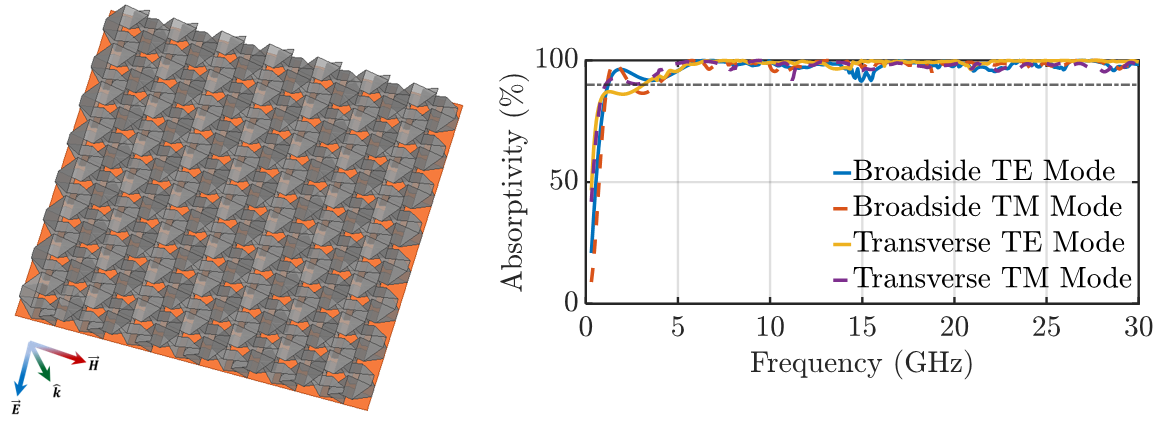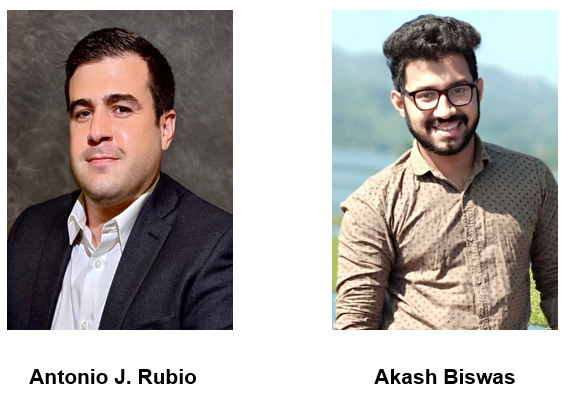
An Ultra-Wideband Origami Microwave Absorber
In this work, an ultra-wideband microwave absorber based on a Tachi-Miura Polyhedron (TMP) origami structure is presented. By appropriately folding the TMP at a specific angle, the proposed absorber acts as a honeycomb design, thereby offering superior absorption performance compared to the state-of-the-art absorbers. Specifically, it exhibits an absorptivity of more than90%in the wide frequency band of 1.22 GHz to 30 GHz for both transverse electric (TE), and transverse magnetic(TM) waves. A fractional bandwidth of 1.84 is supported that proved the ultra-wideband absorption.

An Origami-Inspired Foldable Reflectarray on a Straight-Major Square-Twist Pattern
This paper proposes a high-gain Reflectarray Antenna (RA) design on an origami-inspired foldable structure, which is based on the straight-major square-twist pattern (SMST). The antenna was designed to operate at 16 GHz and direct its main beam along φ=0°, θ=30°direction with a gain of 28.34 dBi. The RA was excited by a horn antenna of 14 dBi gain with a Q-factor of 5.25 positioned at a distance of 10λ with a 10° offset angle. The foldable nature of our origami-inspired structure provides a 92% packing efficiency of the RA aperture surface area, thereby offering a significant advantage for small satellites and terrestrial tactical applications.

